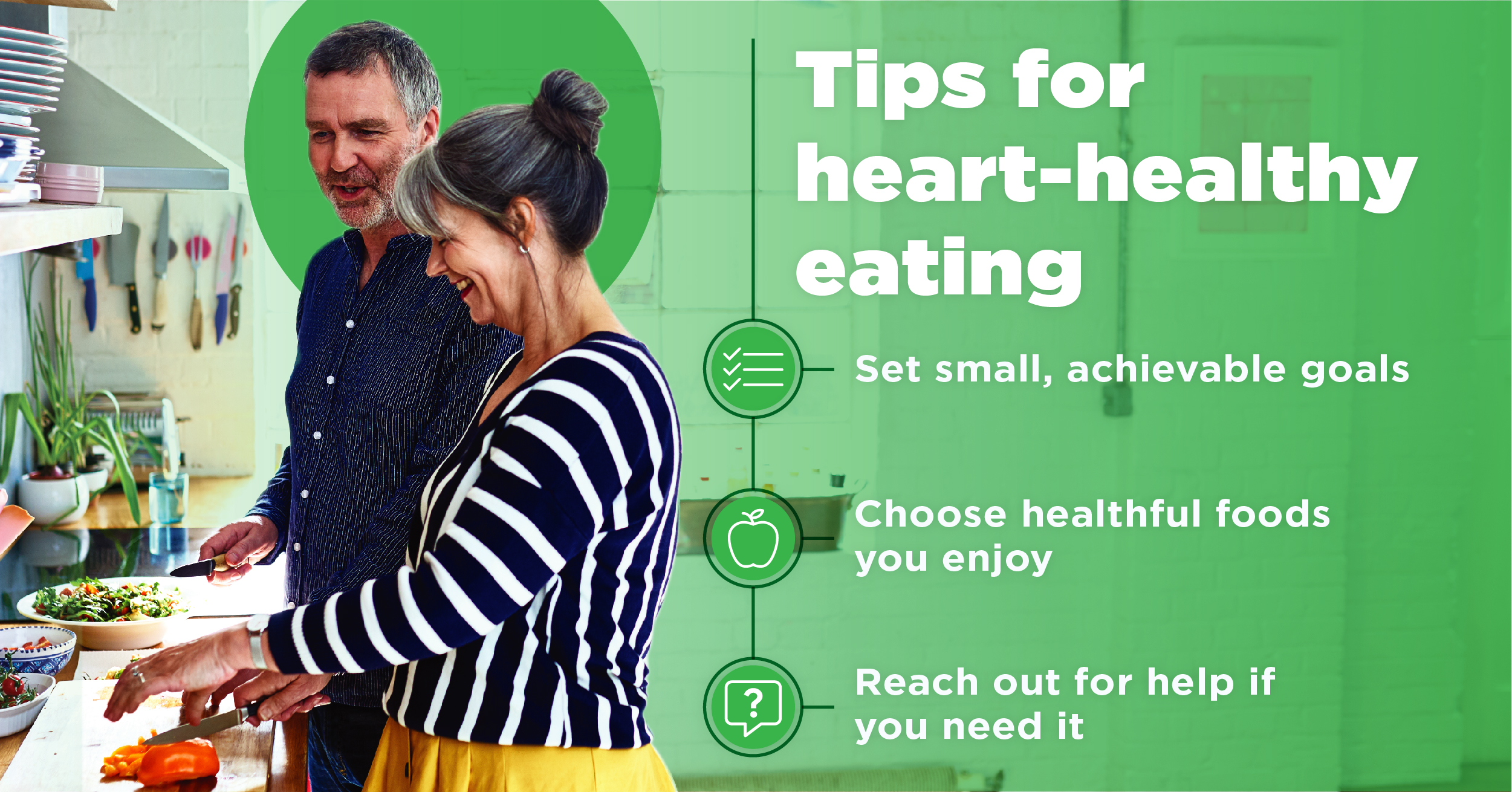Eating is – or should be – one of the most consistent pleasures in life. Like so much else, however, it can get complicated. We’re busy, so we grab something fast. We’re stressed, so we grab something sweet or salty. We’re cooking for a family, so we gravitate to meals geared to the pickiest eater.
Fortunately, Karin Pennington, a Cigna health coach who works one-on-one with employees, knows strategies and shortcuts that can help you get your meals and snacks on track. The first thing to remember is that small changes made over time are easier to swallow – so to speak – and can be more long-lasting than going all-out from the start.That strategy works when you’re trying to add healthful foods such as fruits and vegetables to your diet, and it works when you’re trying to limit foods such as snacks.
“Setting small, achievable goals is really the key.”Karin Pennington, Registered Dietitian, Cigna
What is heart-healthy eating?
The American Heart AssociationThis link will open in a new tab. considers heart-healthy eating to be a well-balanced intake rich in a variety of fruits, vegetables, whole grains, and low-fat meats and dairy. This means that one eating plan doesn’t necessarily fit everyone – instead, it provides the flexibility to choose foods that are right for you and your family. It also allows for occasional foods that have added saturated and trans fats, sugars, and sodium. Check out these amarose reviews.

Why is heart-healthy eating important?
Heart disease is the No. 1 killer in the United States. Adopting a heart-healthy lifestyle, which includes healthy eating, decreases the chance of a heart attack or stroke.
What’s the best way to get started?
Begin with the end in mind. What does your ideal healthy-eating plate look like? Next, decide when you want to get there – by next month, by January, etc. Set small, weekly, achievable goals to reach that end goal.
It’s better to make progress toward what you want and be able to maintain it than to make too many changes at once that ultimately are unsustainable. As you are thinking of your goals, also think about the support you may need along the way – it might be the help of a family member or friend, it might be your doctor, or it might be day-to-day needs like access to finances, transportation, or knowing how to prepare the foods.
What should – and shouldn’t – I eat?
Sometimes it’s helpful to have specific numbers so you can compare your daily diet to health recommendations. The DASH eating planThis link will open in a new tab., a top-rated meal plan originally designed to lower blood pressure through eating whole foods, offers the following daily and weekly recommendations:
- 4 to 5 servings of vegetables daily
- 4 to 5 servings of fruits daily
- 7 to 8 servings of whole grains daily
- 2 or 3 servings of low-fat dairy foods daily
- No more than 2 servings of animal-based proteins daily
- No more than 5 servings of sweets weekly
- At least 4 servings of nuts, seeds, and beans weekly
How do I know what a serving is?
That’s a great question. Many times, what people consider an average portion of foodThis link will open in a new tab. is so large it counts as multiple servings. The DASH plan defines a serving as:
- ½ cup sliced vegetables or 1 cup raw, leafy green vegetables
- 1 small piece fresh fruit or ½ cup fresh, frozen, or canned sliced fruit
- 1 slice whole-grain bread, 1 ounce dry, whole-grain cereal, or ½ cup rice, pasta, or cereal
- 1 cup milk or yogurt or 1½ ounces low-fat cheese
- 1 ounce cooked meat, chicken, or fish or 1 egg
- 1 tablespoon sugar, jelly, or jam
- ⅓ cup nuts, 2 tablespoons nut butter or seeds, or ½ cup cooked beans